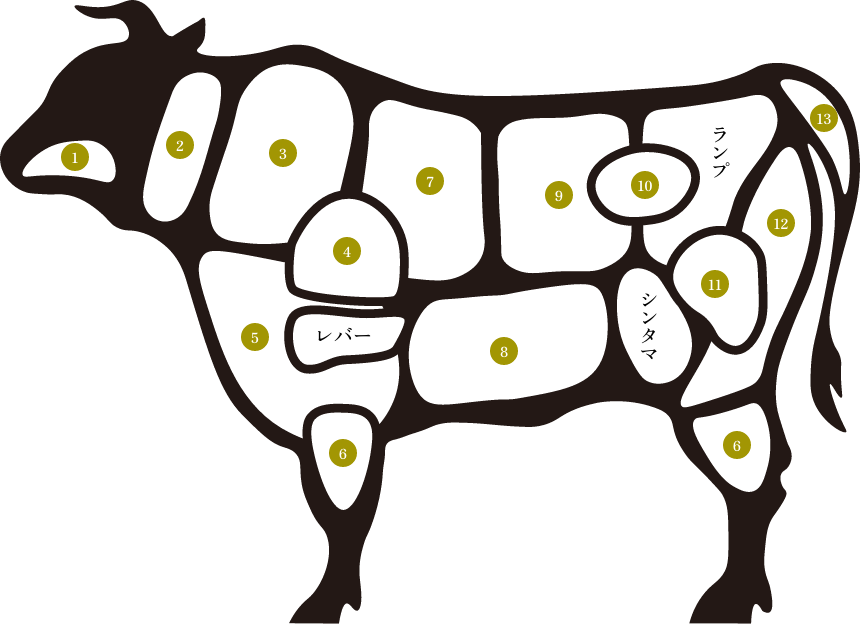About Taste and Meat Quality

About Taste and Meat Quality
01The flavor of beef is defined by its aroma, taste, texture, and a deep gratitude for nature’s blessings.
Kurohana Wagyu, like other Japanese black cattle, is well-known for its rich, sweet aroma, often referred to as “Wagyu scent.”
Our Kurohana Wagyu’s flavor is crafted by harmonizing these three elements—aroma, taste, and texture—with our respect for the gifts of nature, creating a truly “delicious” experience.
About Taste and Meat Quality
02A Perfect Balance
The unique appeal of Kurohana Wagyu lies in its well-balanced combination of aroma, taste, and texture. While factors like fat color (B.F.S.) and lean meat color (B.C.S.) also play a role, the beauty of Kurohana Wagyu comes from the natural variability and subtle quality differences that develop through careful rearing. At Sugimoto-Honten, only beef that meets our rigorous quality standards is selected for the Kurohana Wagyu brand. We are committed to delivering only the finest beef, embodying a refined balance of flavor.

Cuts of Kurohana Wagyu and Recommended Cooking Methods

-
Tongue
Cook as a whole for 3–4 hours with aromatic vegetables like onions, carrots, and celery, or enjoy thinly sliced with salt and lemon as yakiniku. Ideal for stews, miso marinade, or soups.
-
Neck
Tough but rich in umami. Best suited for soups to extract deep flavor; a pressure cooker can tenderize it quickly.
-
Chuck Roll
Has some sinew, so it’s best in thin slices for shabu-shabu, sukiyaki, roast beef, or stews. Its marbled fat brings out excellent flavor.
-
Shoulder Clod
Slightly tough; works well thinly sliced in sukiyaki, shabu-shabu, or stir-fried after marinating. Sinewy sections are ideal for slow-cooked dishes like stews or curries.
-
Brisket
Great for dishes that highlight its rich fat. Use in large chunks for stews or mince for hamburger patties.
-
Shank
Requires long, slow cooking to become tender; ideal for pot-au-feu or borscht. Simmering with vegetables produces a flavorful broth.
-
Ribeye
Low in sinew, perfect for roasts or steaks. Keep the center a light pink for optimal flavor. Thin slices suit sukiyaki or shabu-shabu.
-
Short Plate
Use chunks for stews or pot-au-feu, removing sinew between fat and lean for tenderness. Versatile for thin-sliced BBQ as well.
Note: “Kalbi” refers to this section of the meat and comes from the Korean word for “ribs.”
-
Striploin
Known for its excellent tenderness, aroma, and flavor. Ideal for steak; thicker cuts retain juiciness best.
-
Tenderloin
Tender with mild flavor, perfect for steak, roast beef, or beef cutlet. Thin slices work for sukiyaki or shabu-shabu, especially for lighter meals.
-
Top Round
Lean and versatile; often used for roast beef, tataki, and other low-fat dishes. Known as “round steak” abroad for its health appeal.
-
Outside Round
Often thinly sliced for stir-fries or cured as corned beef. Its saltiness enhances its natural texture.
-
Oxtail
Ideal for long-simmered soups that yield tender, gelatinous meat. Korean Gomtang soup is a popular preparation.
